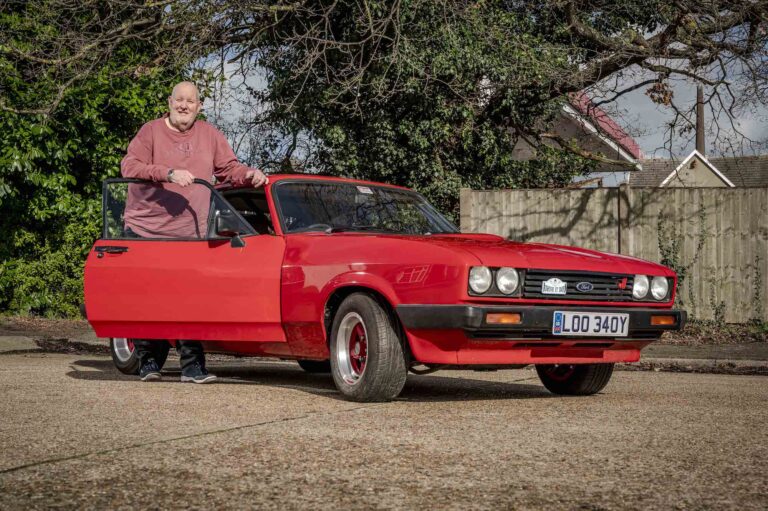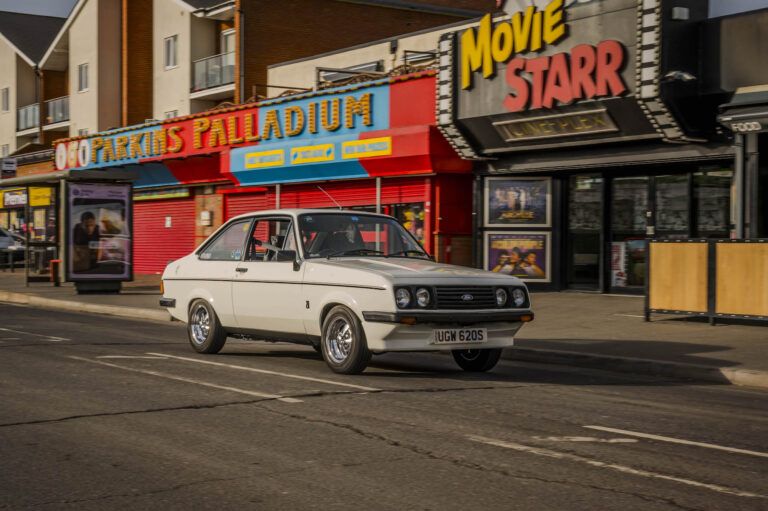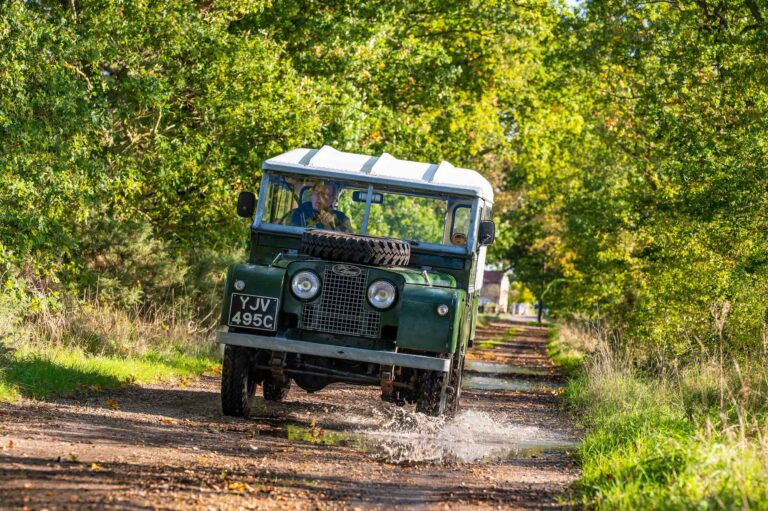When John Rounce’s cousin bought a Triumph Spitfire in the scorching summer of 1976, he was a little envious.
Driving around in his big sister’s hand me down – a Riley Elf – didn’t quite have the same appeal to the then 19-year-old.
“My cousin was the same age as me and, after he crashed an Austin 1300 into a lamppost and wrote it off, he got this Spitfire, and I was ‘crikey, a sports car, at 19’,” he says.
“I thought ‘right, I’m going to look into this – I fancy a Midget’. The Elf was a ‘keep me off two wheels’ family bribe when I was 17, and I didn’t really like it, but it was what it was.”
The weather – day after day of unbroken sunshine and 30C temperatures – also played its part in John’s search for a little MG.
“I can remember getting in the Elf on one of these really hot days and I couldn’t hold the black plastic steering wheel, and I’m thinking ‘he’s got a Spitfire!’” laughs John, 65.
When the Riley succumbed to terminal subframe and suspension issues, the hunt was on for a Midget.
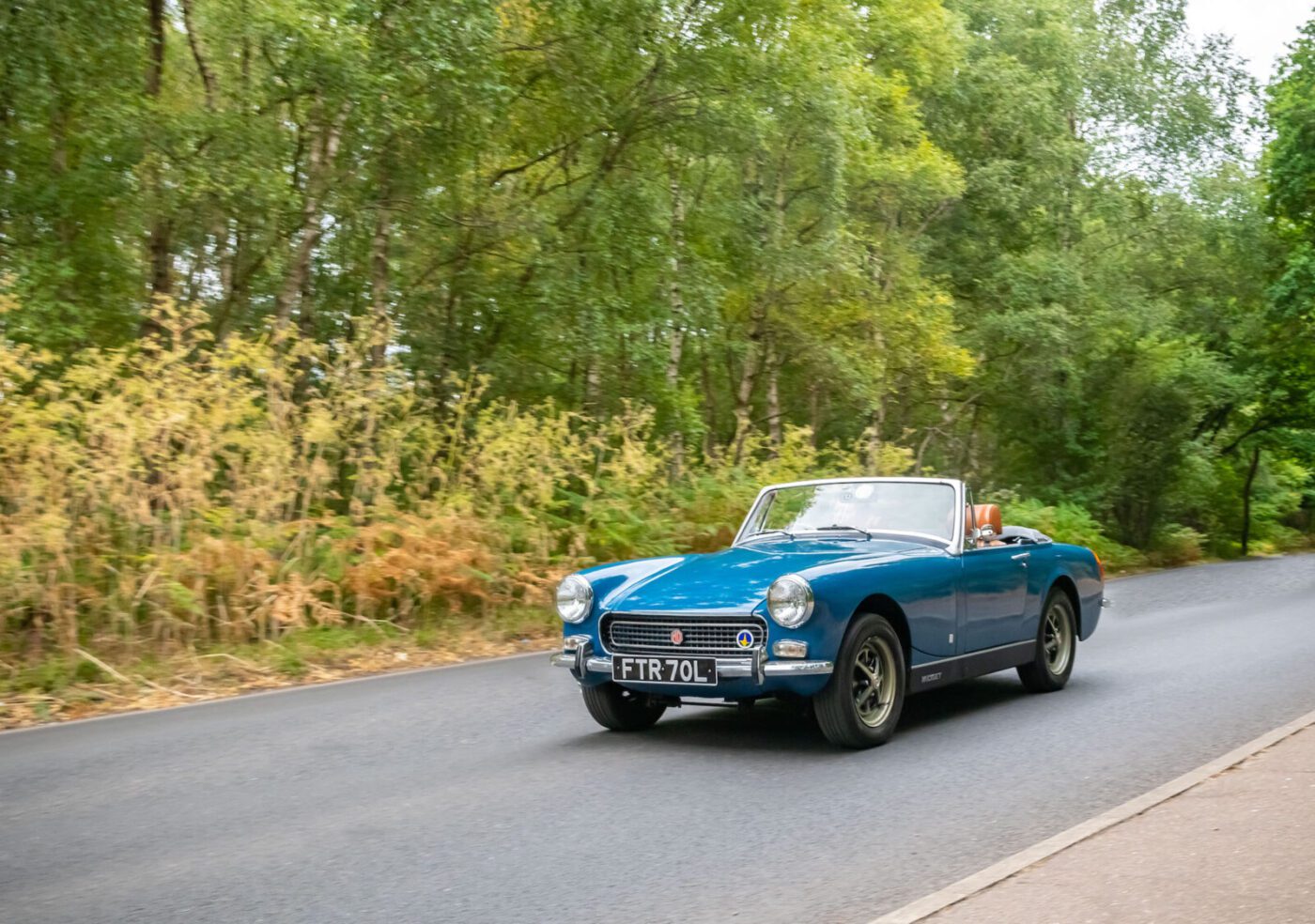
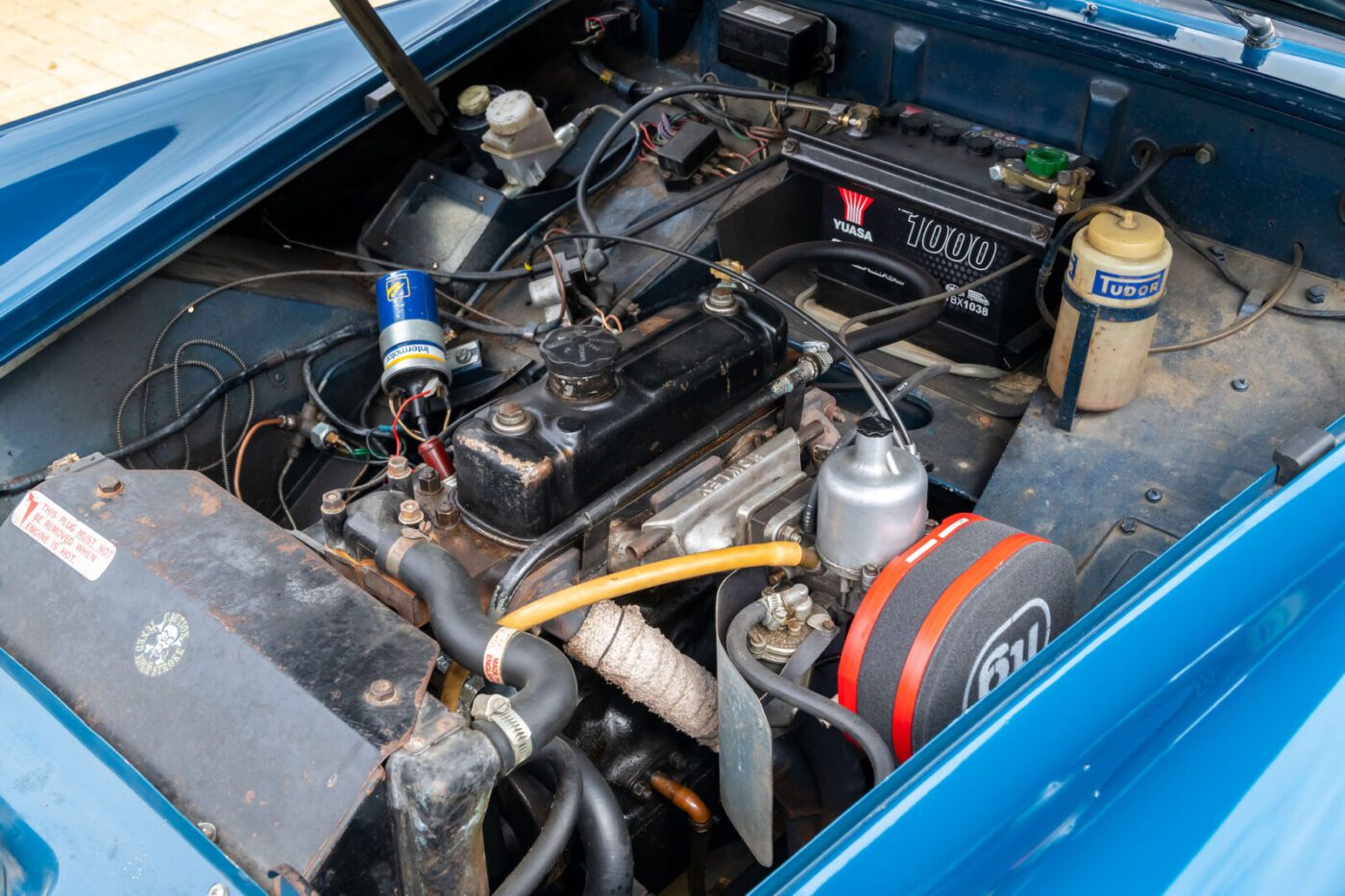
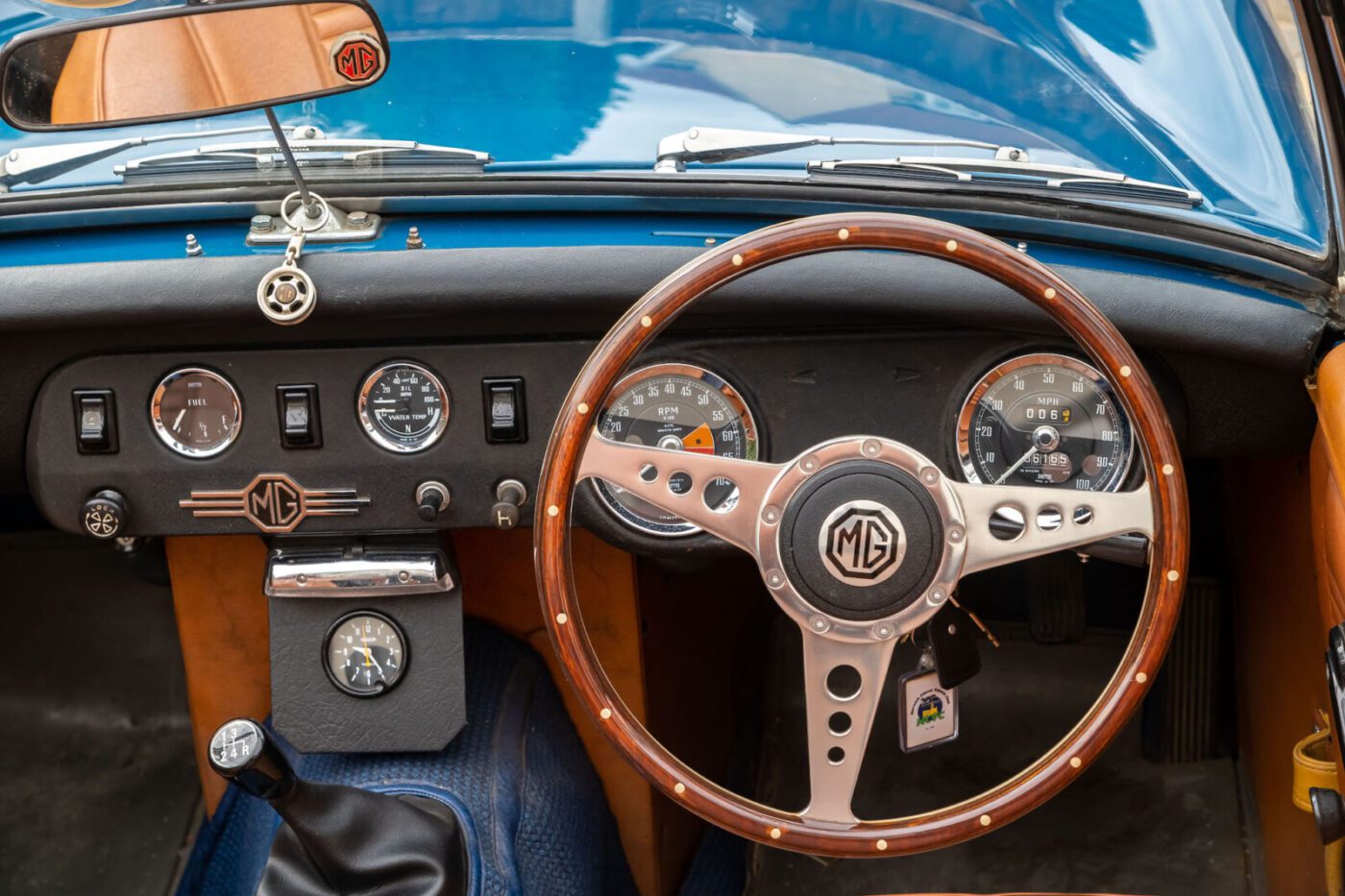
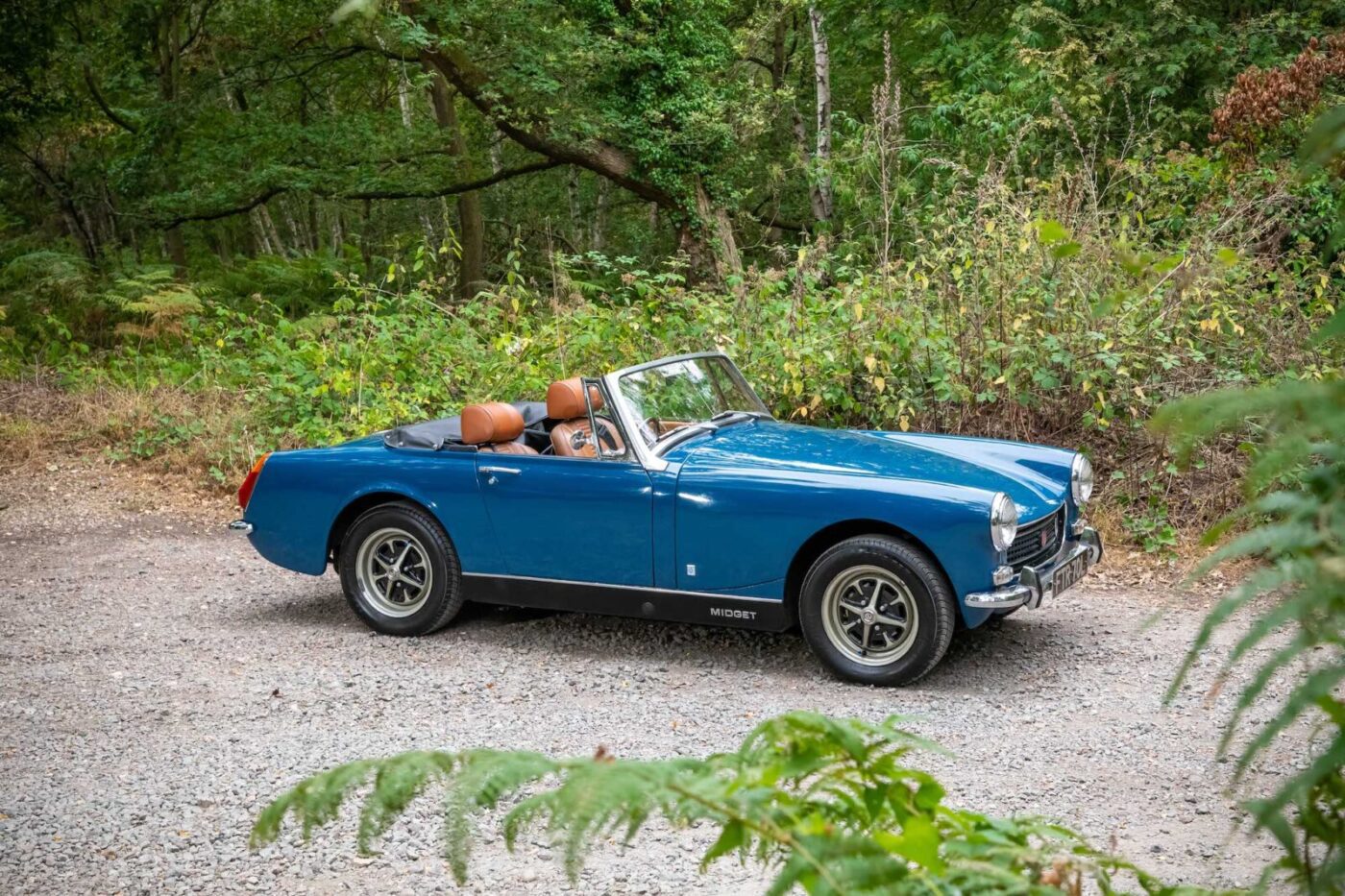
He found the teal blue car that now sits on his driveway in the local newspaper, and headed off with his father, also John, and a friend to have a look at it in October ‘76.
“The guy was advertising it for £850 and, while we were out test driving it, dad got him to accept £750 and that was the deal,” he says, taking the four-year-old, three-owner car home.
“I thought it was going to be a bit prohibitive with insurance at that age, but it wasn’t too bad. I’ve got £42 in my head. At the time I was earning £25 a week as a trainee TV engineer.”
Nearly half a century and one full restoration on, and the MG remains an important part of John and his partner Caron’s lives.
“It’s been a huge chunk of my life, the best part of two-thirds of it,” he says. “When we go out in it, Caron says ‘your face when you drive it, you love it’. And I do, it’s just miles of smiles.”
After leaving school at 16, John was steered away from his first choice of career as a motor engineer by his father, who worked for a motor factor and urged him to go into electronics instead.
“He said it was cold and horrible in the winter, so I started work as a trainee TV engineer in 1973,” he says.
READ MORE ABOUT SOME OF OUR GREATEST CLASSIC CARS WITH

A series of articles on our Cult Classics site.
When friends started getting mopeds, John’s parents were anxious to keep him off two wheels.
“When I was 15, my 17-year-old cousin – the brother of the one who got the Spitfire – was killed on a Triumph Tiger Cub, so I was told that when I turned 17 I’d have a little car,” he explains.
Enter the ill-fated Elf, even though John had been saving for a Hillman Imp.
“My sister coincidentally got a company car so the Elf came to me, but an Imp was what I really wanted, and I’d still have one now,” says John, who moved from TV repairs into working on radar and radio for regional airline Air Anglia (later Air UK and KLM UK) in the spring of 1976.
When the Midget came home, John and his father got to work digging a pit in the garage, which turned out to be a more than useful addition many years later.
“My uncle had a pit and I thought it would be useful to fiddle about with the car, and my dear dad did most of the digging work,” he says.
Over the course of the next five years, as the Midget was used as commuter and pleasure car, John got his hands dirty changing the head gasket “a few times”, and replacing one of the pistons and rings “that cured the running on three cylinders issue”.
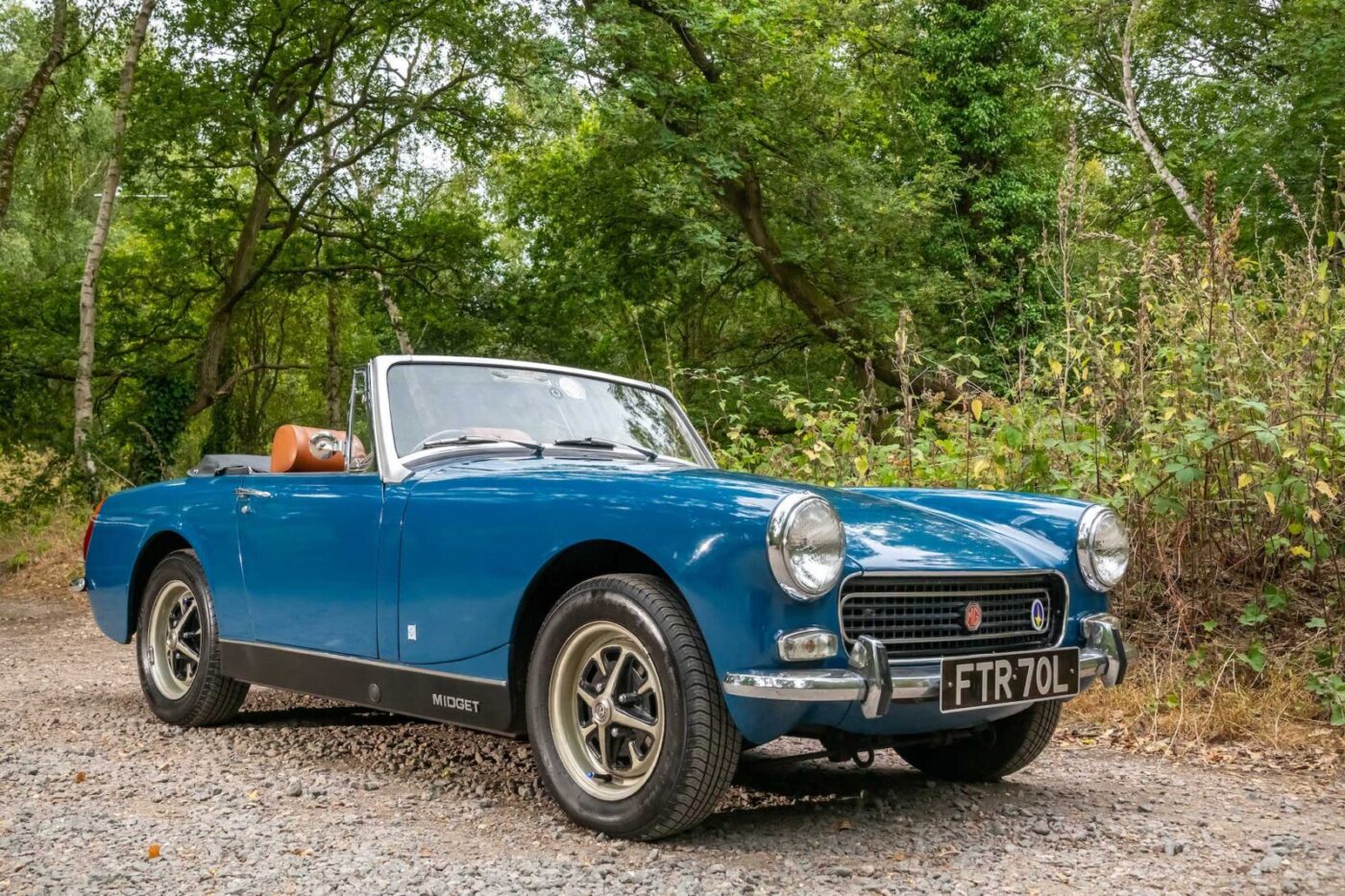
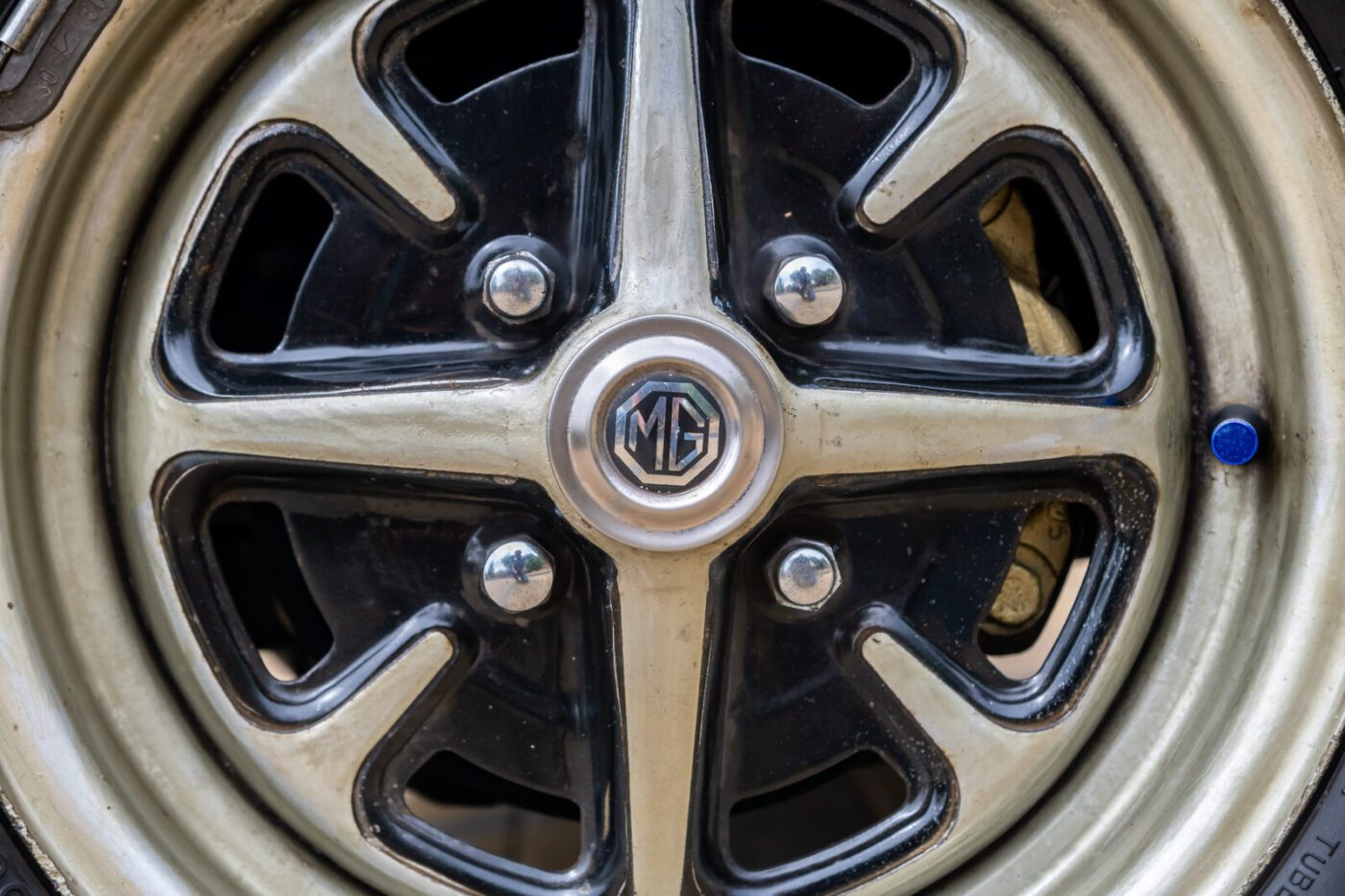
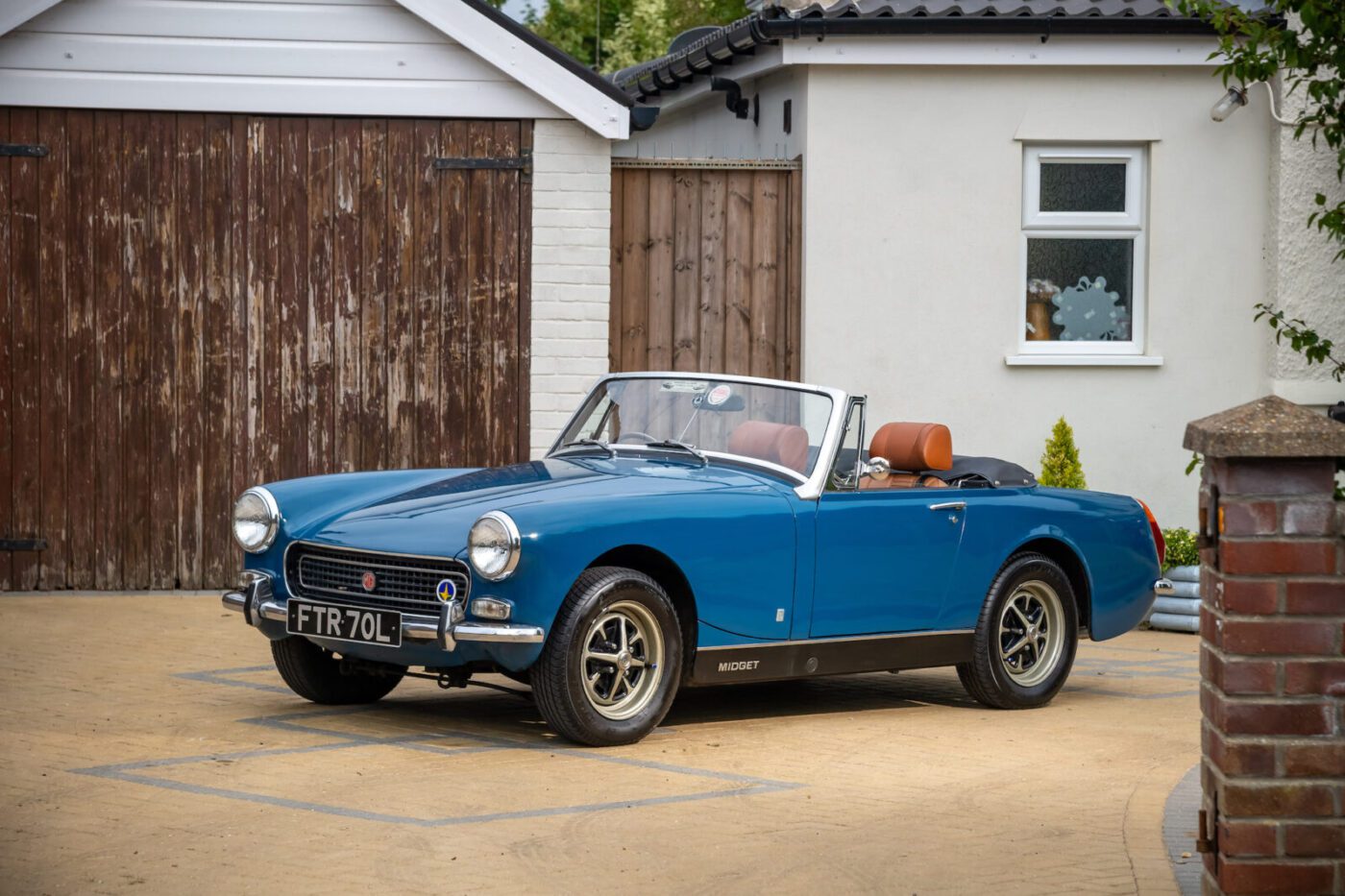
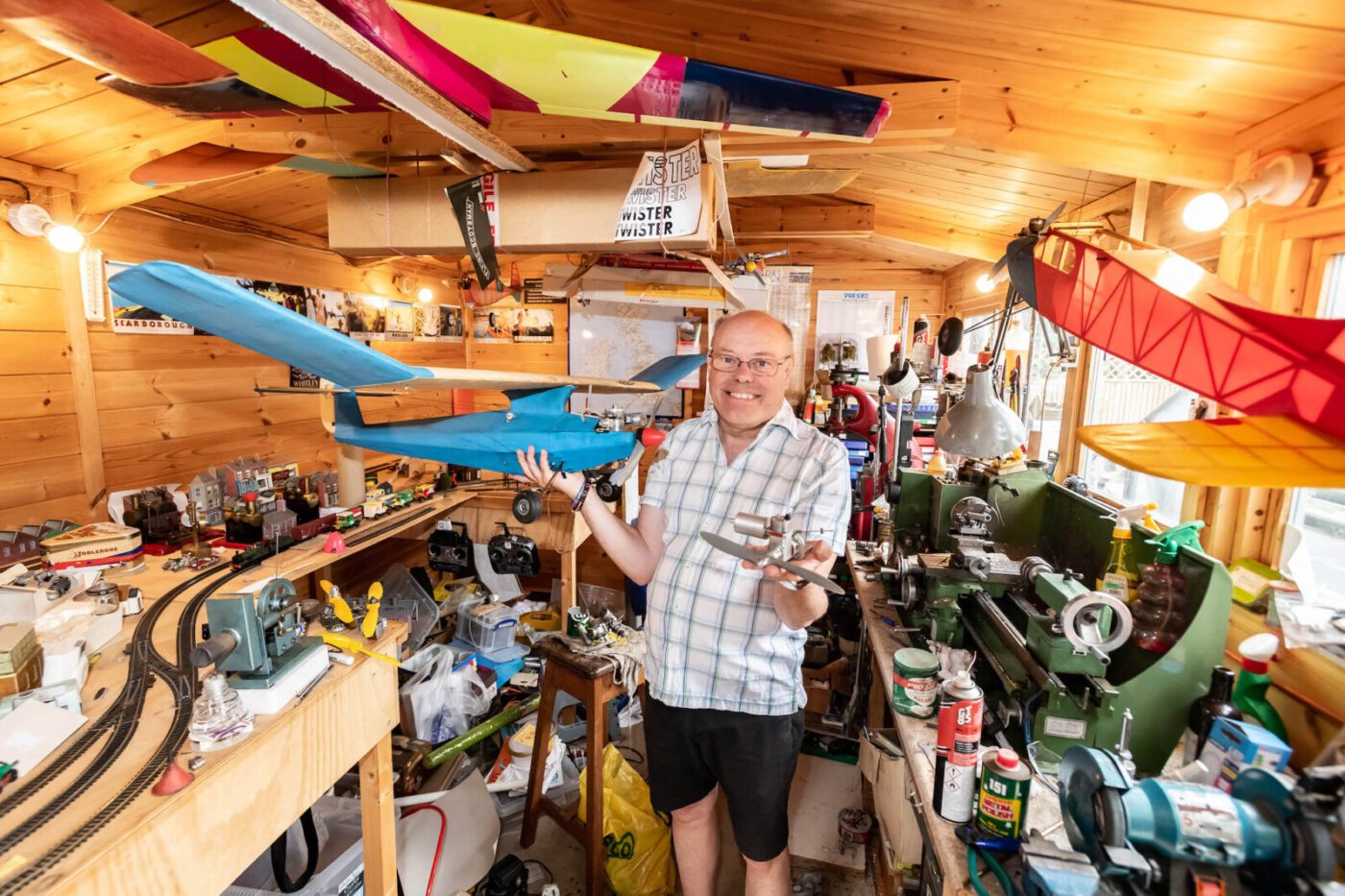
“I got quite adept at adjusting SUs, I’m quite handy with those, but then the clutch started slipping,” he says. “My friend had this Mk2 Escort RS2000 and he said ‘do you want this, it’s coming up for sale?’ It was only two years old, and we did a deal.”
Most people would have moved the Midget on but, after five years, John had already formed an emotional attachment to the car.
“I’m quite sentimental,” he says. “I like to hang on to things I’ve had for a while, and the longer you’ve had it the less likely you are to get rid of it.”
We’re in the garden, and there’s laughter from inside the house. Caron calls out “he’s a hoarder secretly”.
Smiling, John adds that he’s “still got a pushbike in the garage from my 15th birthday in 1972”.
Between 1981 and 1998, the MG remained at the back of the garage, while John worked on his other passion – model aircraft with tiny internal combustion engines he builds himself in his shed.
81.5% of customers could get a cheaper quote over the phone
Protect your car with tailor-made classic car insurance, including agreed value cover and discounts for limited mileage and owners club discounts

Every single part of the tiny, single-cylinder two-strokes are handmade on a lathe and milling machine, before being tested and launched into the air powering similarly home-made model planes.
Getting the aircraft to fly brings “absolute elation”, says John.
“When I start one up and get it to fly in the field, even now, I think ‘I’ve made all this’.”
From creating 2.5cc engines that can fit in the palm of your hand, John turned his attention to something rather larger and more powerful – inspired by an article by David Vizard in the pages of Cars and Car Conversions.
Long before he ever thought about getting the Midget back on the road, he decided to have a crack at producing a modified 1275cc A-series engine for a Mini, with the aim of achieving 100bhp at the wheels.
Using a donor engine from an Austin 1300 – transverse like the Mini – he got to work.
“It used to live under a chair in the bedroom,” he laughs, gradually putting the engine together and bouncing ideas around with like-minded people at model engineering night school classes.
“I got to a point where I thought ‘this is a bit potty really’, I’ve got a car sitting in the garage that needs doing, and is a Mini ever going to happen? I never had a Mini shell.
“So I thought ‘no, I’ve got to make this fit the Midget’.”
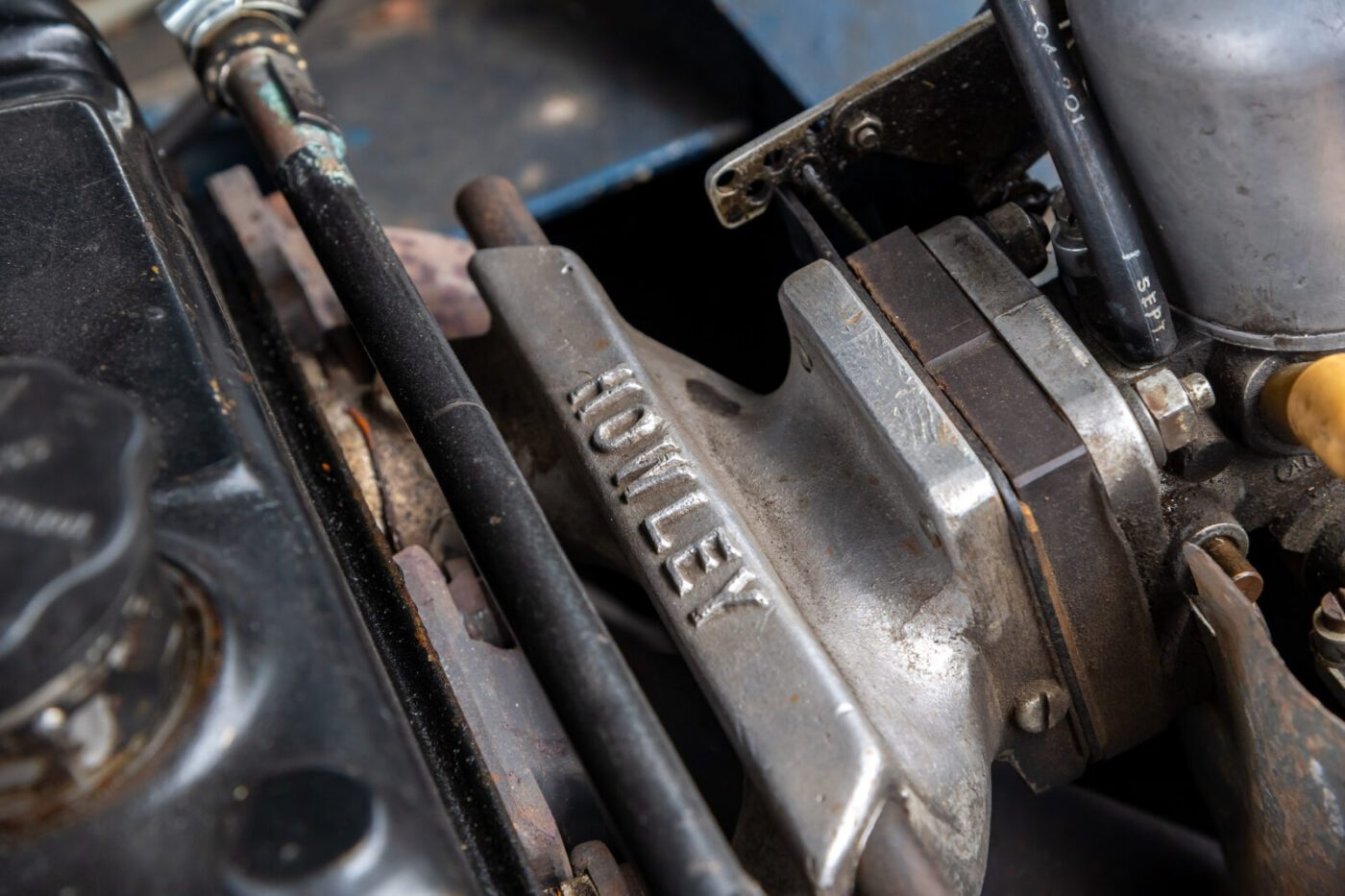
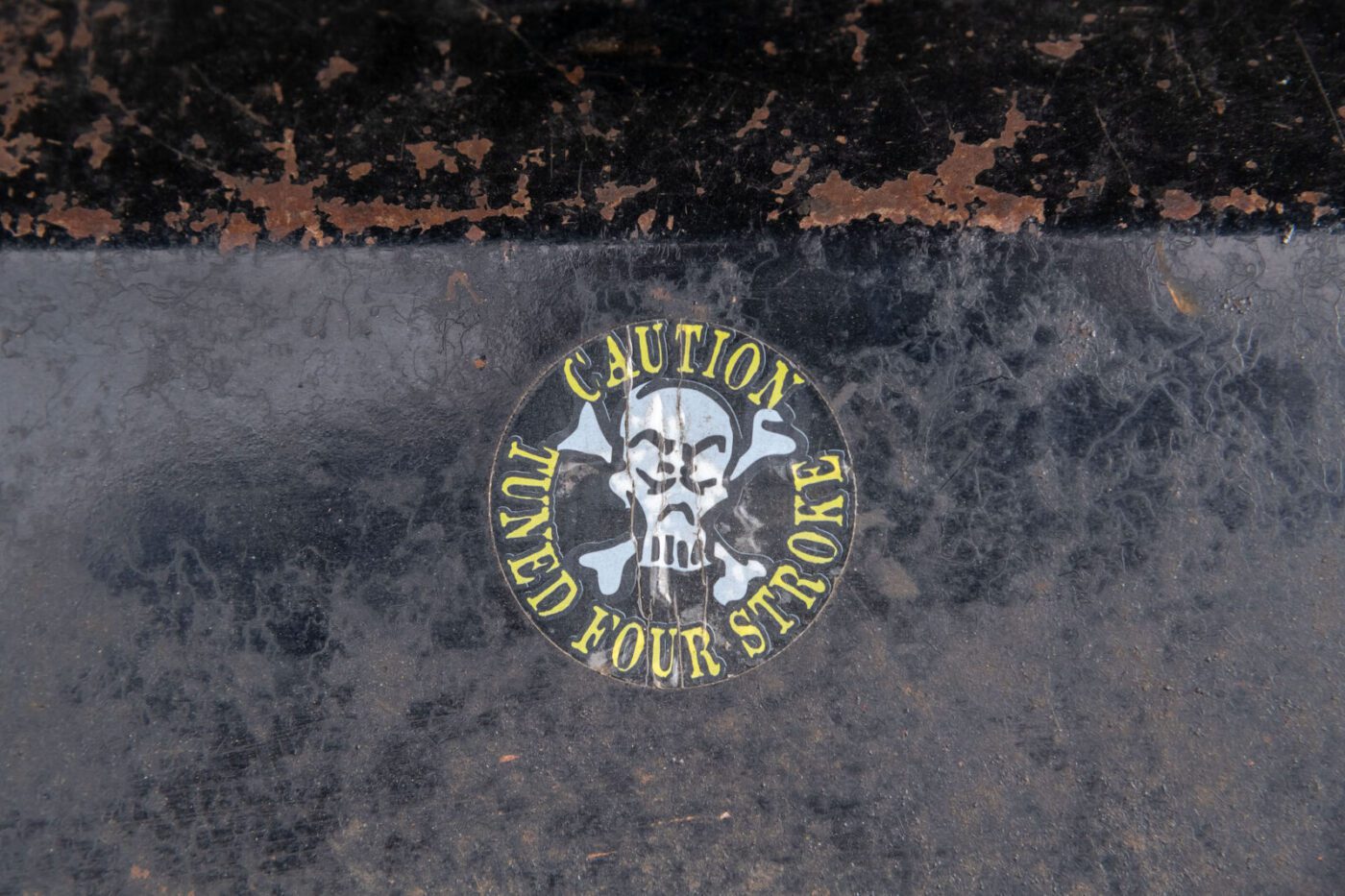
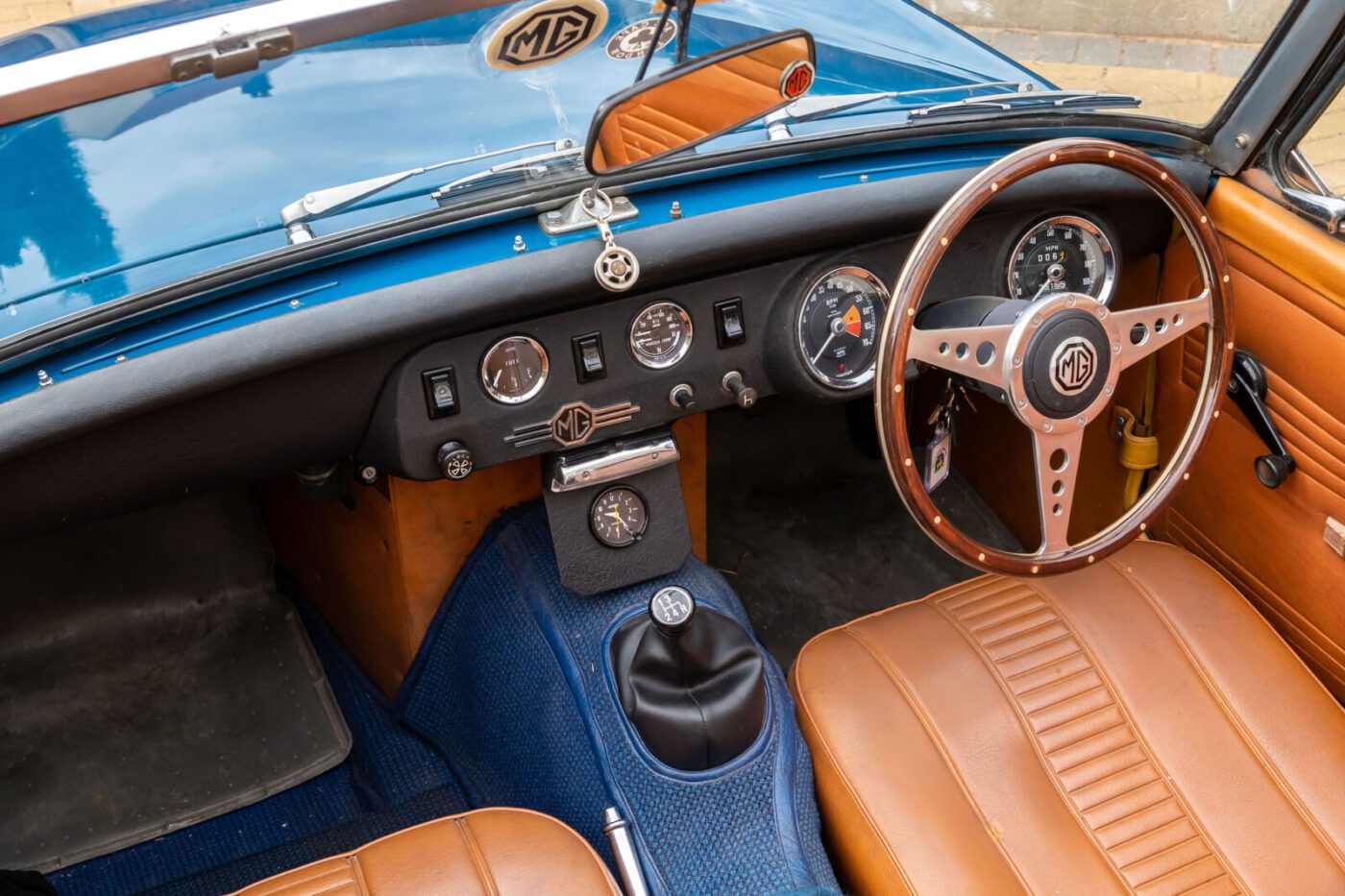
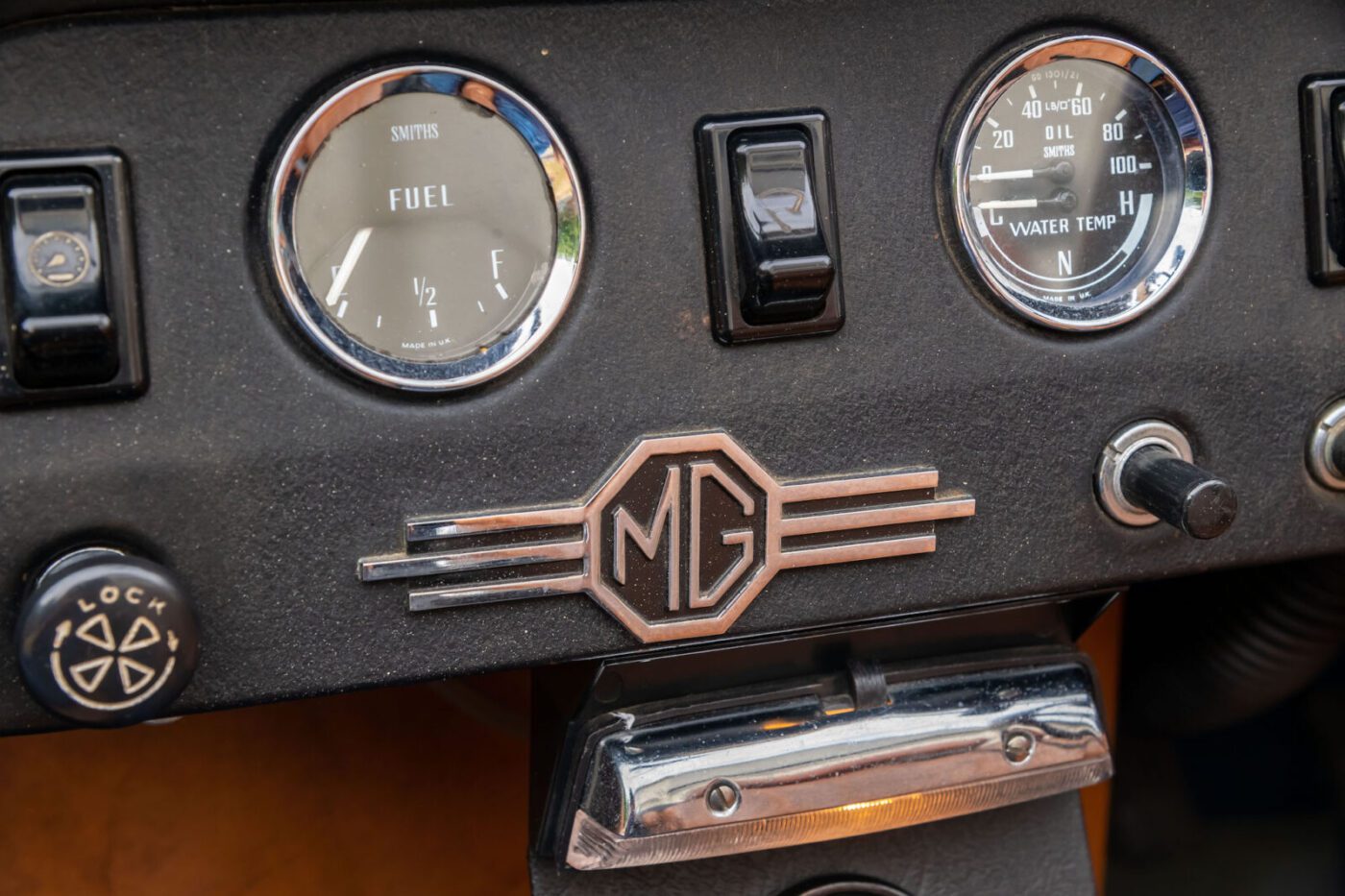
This meant converting the block from transverse to inline, which John says “you can do with a bit of ingenuity and a bit of machining”.
The bore was increased to 1435cc to take Triumph pistons, the stroke was lengthened and the crankshaft offset, along with upgraded connecting rods and a competition clutch.
All of the engine work was completed before the Midget ever left the garage, which came to pass in the winter of 1998 after John got chatting to a friend (also John) involved with aeromodelling.
“He was a car restorer, and we got together over the winter of 98/99,” he says, unearthing the Midget from beneath various things that had been stored on it, including several model aircraft. “The car went over to him and he did the bodywork – I’m not a welding person – and I did the engine.
“I can honestly say that it’s still got all of its original panels. There were bits of rust, but nothing that needed replacing. The worst piece was the front spring hanger on the near side, which was plated. At the same time, we thought it might be a good idea to put inertia reel seatbelts in to replace the fixed belts.”
READ MORE ABOUT SOME OF OUR GREATEST CLASSIC CARS WITH

A series of articles on our Cult Classics site.
Restorer John resprayed the car in its original teal blue, and all that was left to do was the interior.
The seats were re-bolstered beneath the original covers, but the carpet was in a fairly sorry state.
“At Air UK at the time, we had an upholstery department run by a couple of brothers, Ron and Bunny, both long gone,” says John. “They were good people, and I took the old carpets in because they were quite bedraggled and falling to bits.
“They said they couldn’t match the original colour but they had this nice Air Anglia blue. They used my carpet as a pattern and I got a full set of carpets that would normally be used in a Fokker F27 Friendship. They’re probably more hardwearing than the Leyland special!
“It’s possibly the only Midget with aircraft carpet, but the colour certainly doesn’t look out of place with the bodywork.”
So how did it feel when, at Easter 1999, John took to the road again in the MG after 18 years?
“It was wonderful, oh yes,” he says, proud of the fact that he tackled the restoration rather than simply leaving the car to rot.
“Lots of people in this hobby say ‘I’ll do that one day’, even though there’s a tree growing through the chassis. It often doesn’t happen.
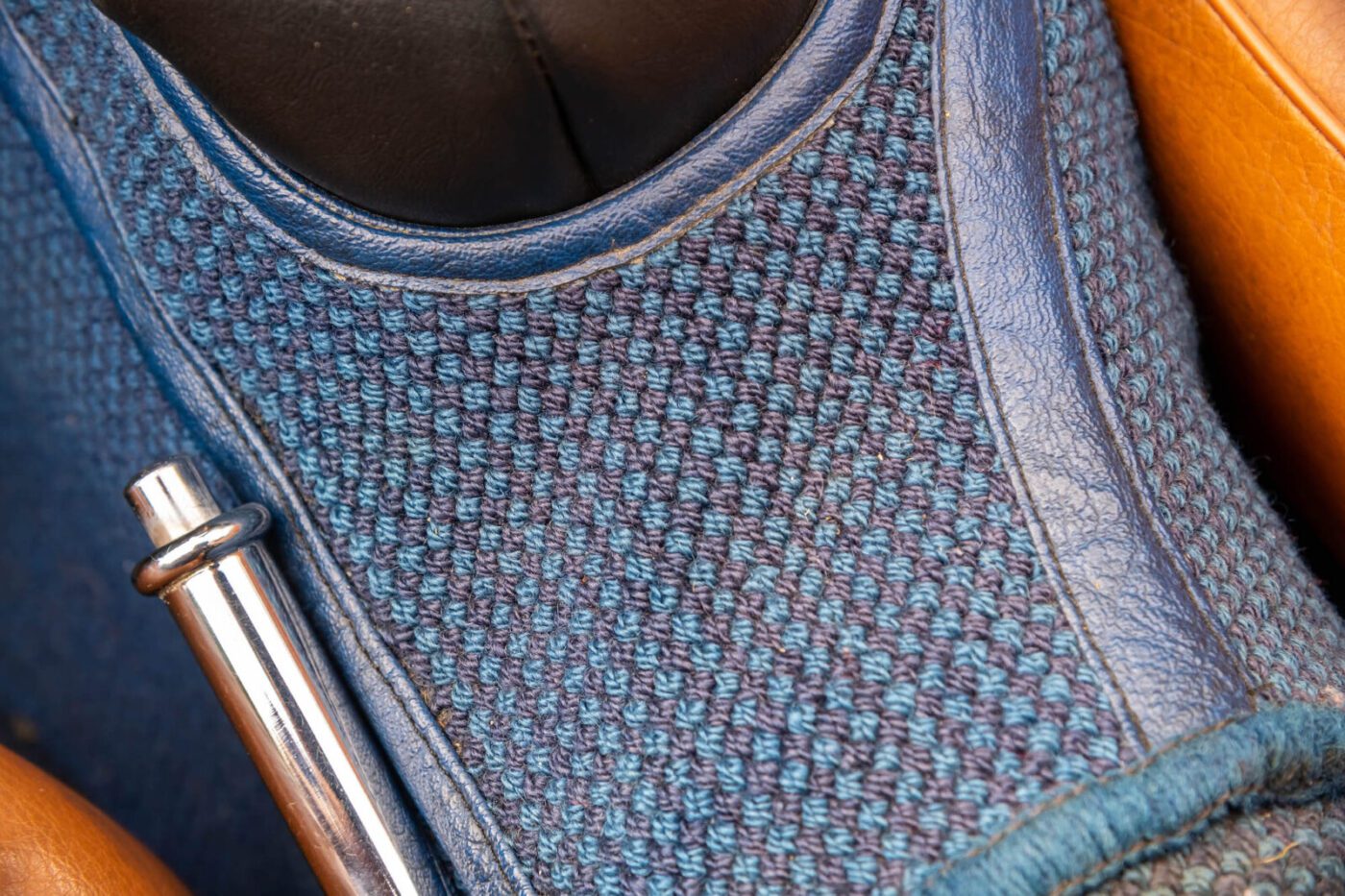
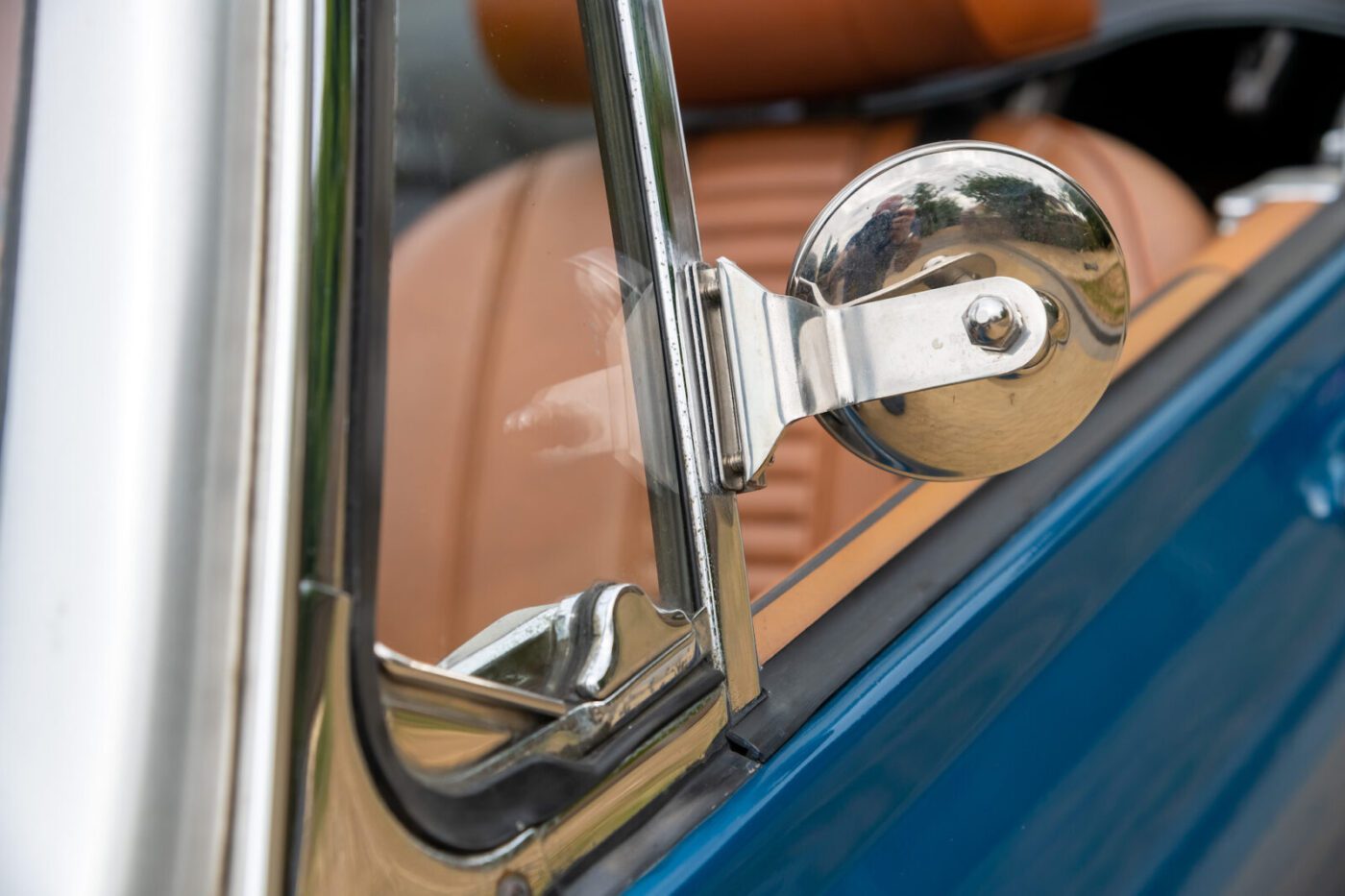
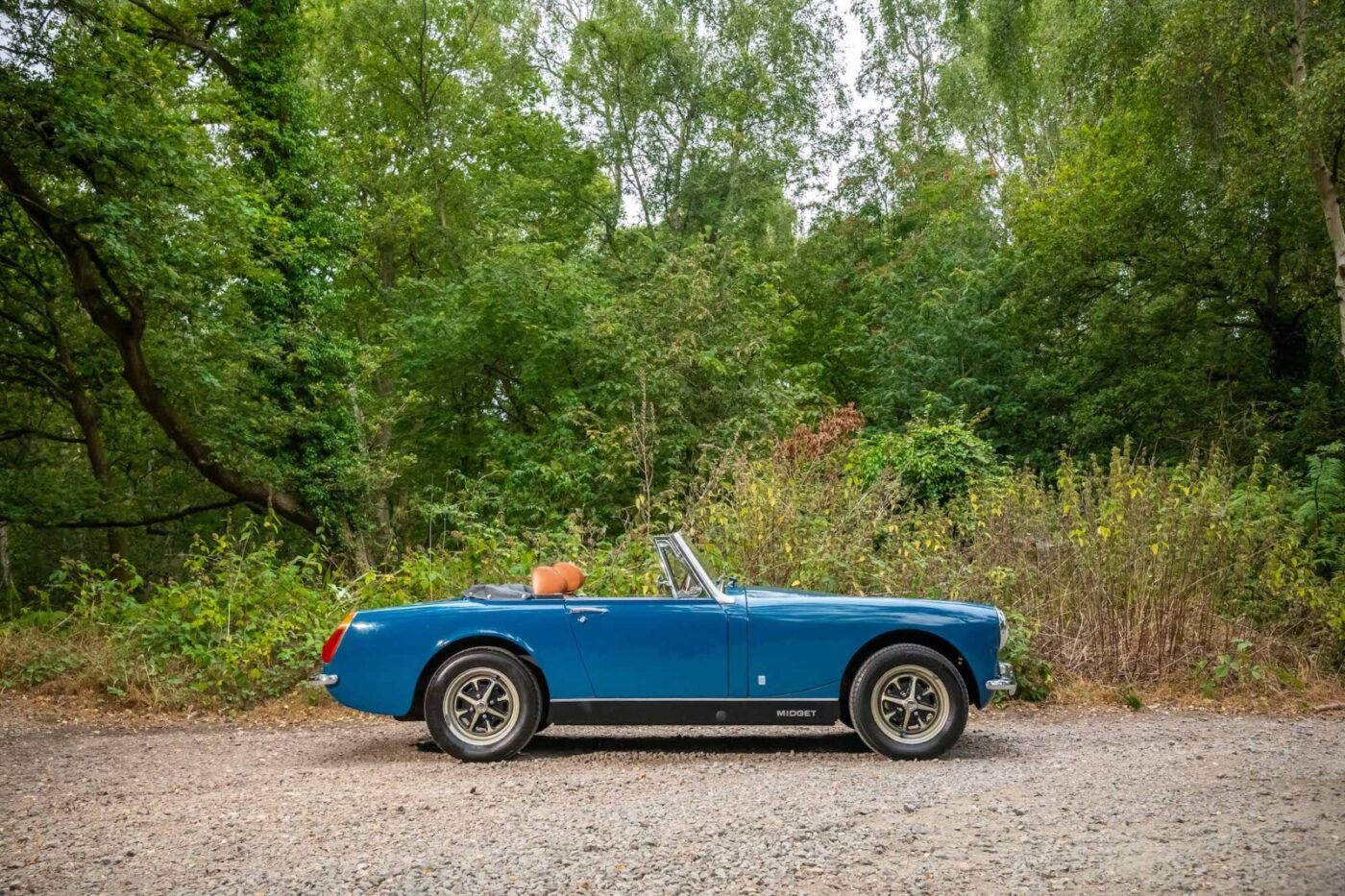
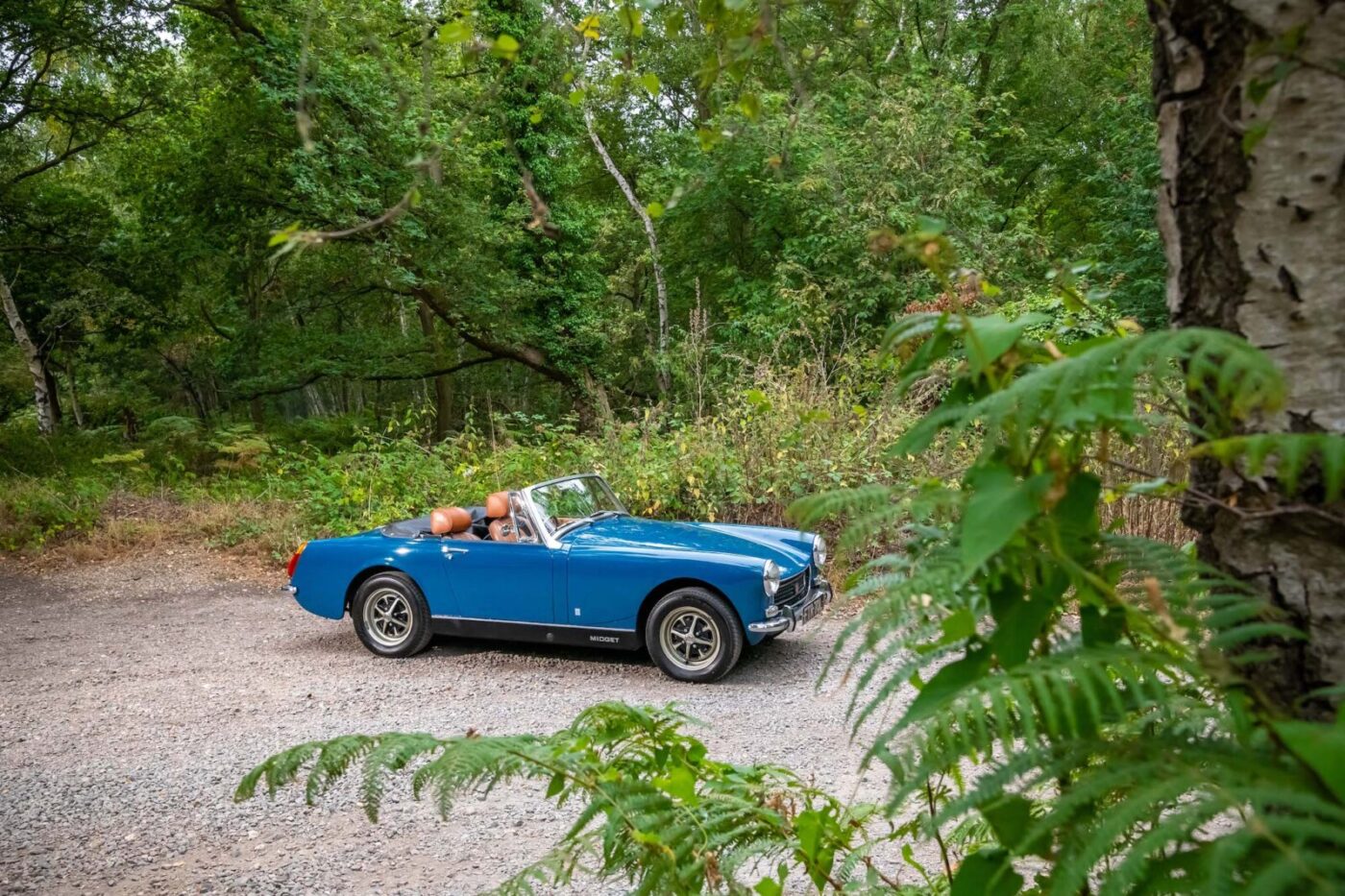
“I did often say ‘I’ll start that next summer’, but it didn’t happen and I think dad was getting a bit peed off with it being in the garage, and he tackled a couple of jobs before I did.”
Sadly, John senior died in 1992 at the age of 67, long before John got the car back on the road.
In September 1999, John joined a local car club after seeing a flyer in a shop window.
“We do our Sundays at local events, but these days if it’s too cloudy we don’t go out in case it rains. It’s not the wet on top, it’s the wet underneath and, although it’s Waxoyled to give some protection, water will still sit in little edges and things.
“We’ll go out to the Norfolk coast, but selectively because I don’t like leaving it in a High Street somewhere to go walking about – that’s very unlikely to happen.
“I’m very protective, and that’s the penalty of having an open top.”
And what about that engine? Does it produce the target 100bhp at the wheels?
“I can’t imagine I got anywhere near Mr Vizard’s project engine,” he smiles. “But it’s all my own work, and that gives me gratification.
“To be honest, there was such a big gap between driving the car with two different engines, plus driving modern stuff in between, I can’t really tell the difference.
“I sometimes go out in it now and think ‘is this much more than a standard one?’ The Clubman exhaust is quite noisy, making a lot of cacophony but it doesn’t seem very quick. Also, as you know with these little cars, you’re going 50 and you feel like you’re going 80. It’s just a pleasure driving it, and it goes where you point it, like a little roller skate.”
Of course, driving has changed a lot since the 1970s, and John admits to feeling a little vulnerable on the road in such a diminutive car.
“If I drive through the city, any yob could throw something at you or take a swing at you at traffic lights, and of course modern vehicles are somewhat bigger now,” he says. “When you’re sitting between two Chelsea tractors at the traffic lights and you feel quite dwarfed, but it’s OK once you get out on the open road.”
With a redundancy cheque in his pocket, John retired early in 2003, and met Caron in 2011, taking the Midget to Holkham on the north Norfolk coast for their second date.
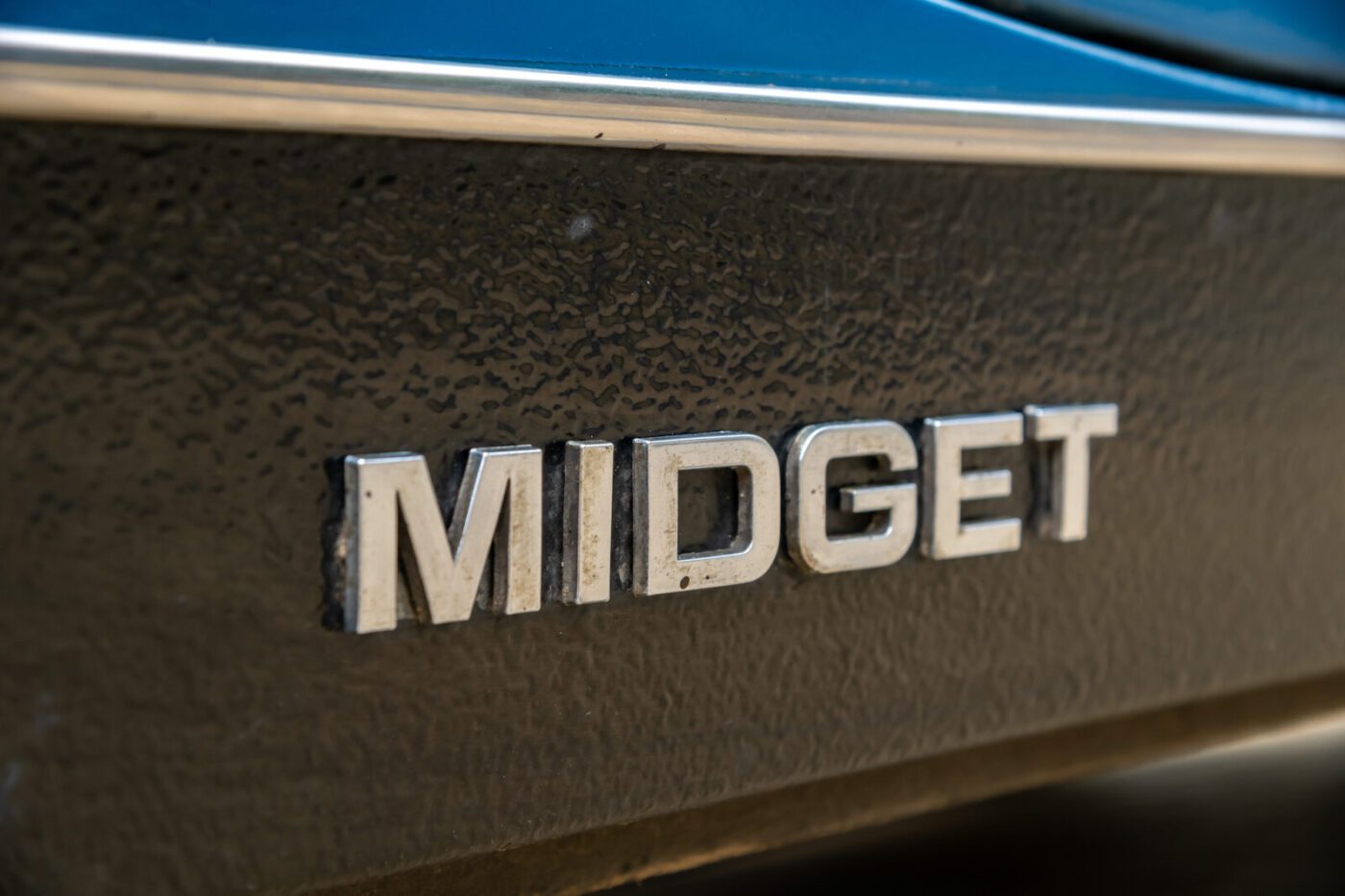
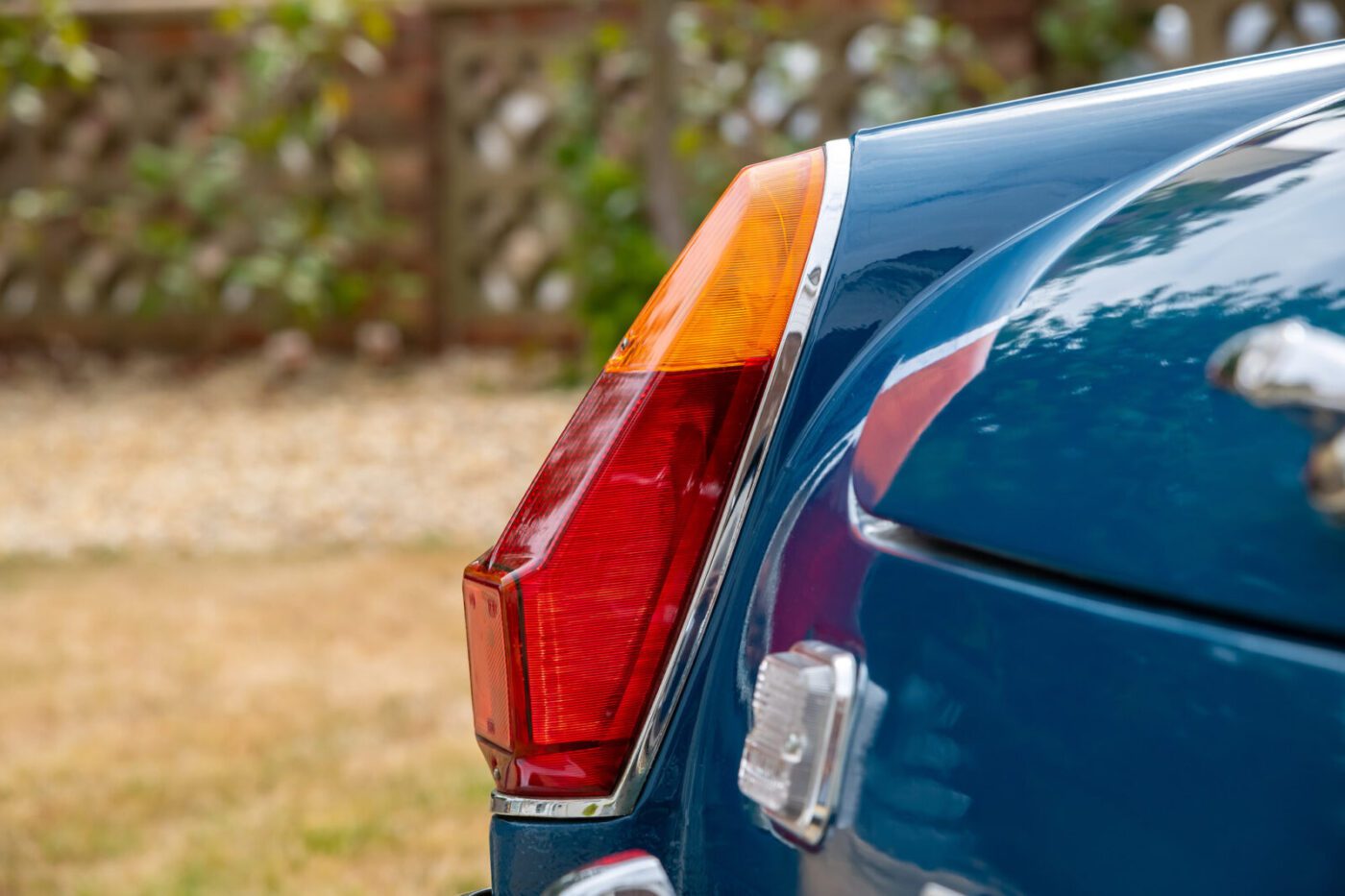
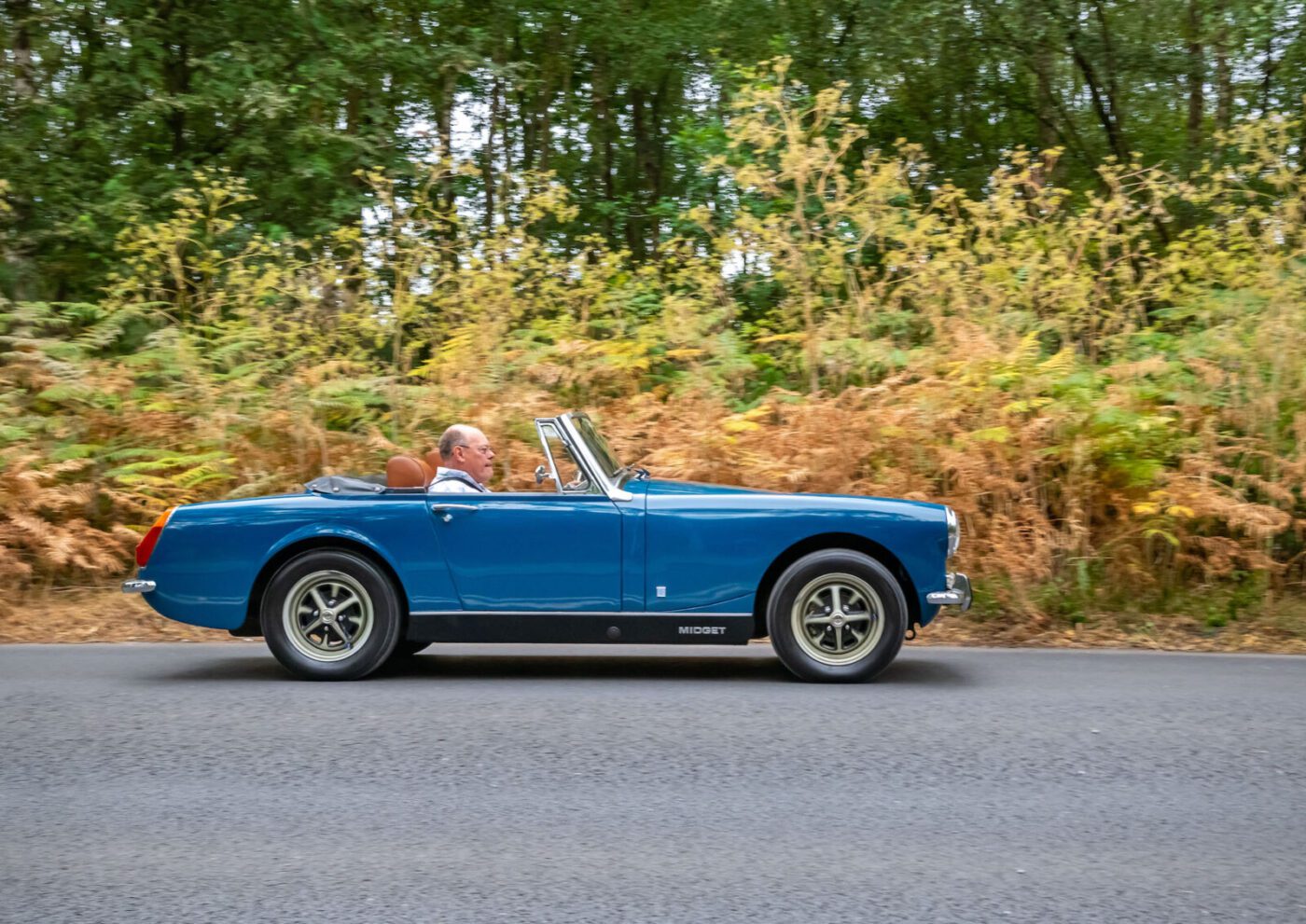
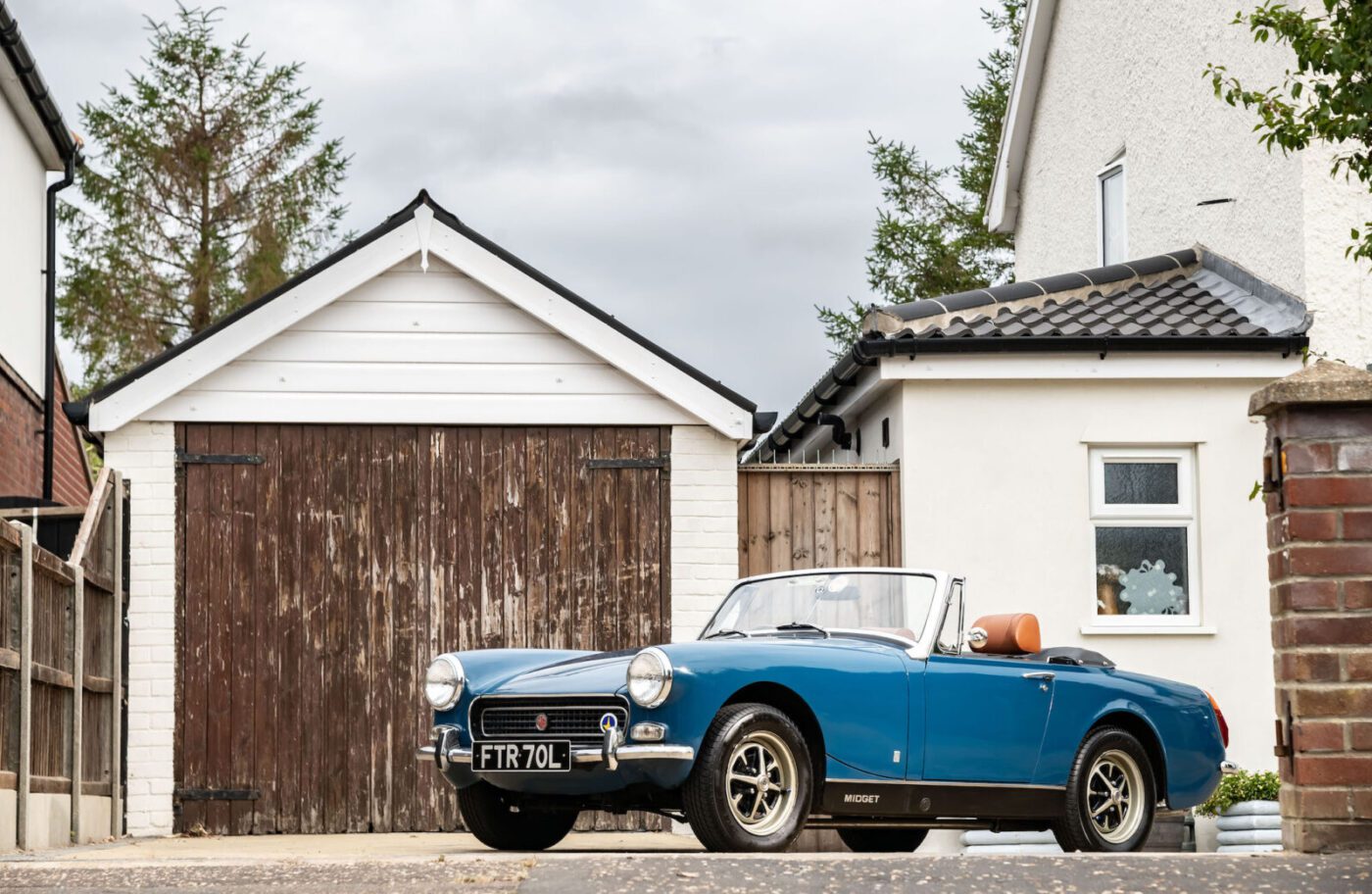
“She loves it,” he says, “and we’ll hang on to it and use it all the while we can get in and out of it.”
And what then?
“Then it may be time to move it on, and I know exactly where it will go, to a friend of mine who has an 1850 Dolomite which is as it comes out of the factory – it’s unbelievable.
“He loves the Midget, though he doesn’t necessarily like what I’ve done under the bonnet – he said it’ll come back to standard. I’ve still got all the bits to put it back together.
“Truth be told, when I told him about this feature, he said bring it round here, I’ll polish it for you, so that’s his handiwork.”
When it comes to the crunch though, it may be hard to let go.
“That’s tricky isn’t it?” he laughs. “You might think ‘I might be able to get in that perhaps next week’…”

